Brand Building Process
Make no mistake about it: a recognizable and loved brand is one of the most valuable assets a company owns.
According to a Nielson survey, 59% of consumers prefer to buy new products from brands familiar to them.
As a small business, you may be competing against big brands with devoted customers and unlimited marketing budgets. That’s why you have to find ways to stand out—with a solid brand building process of your own.
My favorite piece of advice to any entrepreneur is to build a brand, not just a business.
This is what will give you massive growth and raving fans.
How do you build a brand?
Look:
Branding is much more than just a cool logo or a well-placed advertisement.
You need to do more.
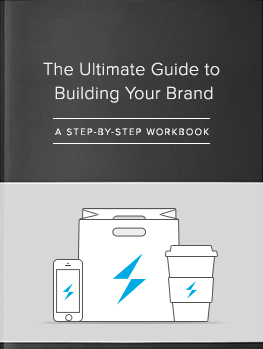
THE ULTIMATE GUIDE TO BUILDING YOUR BRAND
Use our step-by-step workbook with tips, templates, and guidance to help build a brand for your business! Define your target audience, research competitors, develop a voice…and more.
Let me provide you with a quick definition before diving into the nitty-gritty of brand building.
What is a brand?
Simply put, your brand is defined by a customer’s overall perception of your business.
The founder of Amazon, Jeff Bezos, says it even better: “Your brand is what other people say about you when you’re not in the room.”
Your brand is your reputation!
In today’s market, a successful brand has to be consistent in communication and experience, across many applications:
- Environment (storefront or office)
- Print collateral, signage, packaging
- Website & online advertising
- Content publishing
- Sales & customer service
- siiteInternal (with employees)
Now, brand building being simple? The truth is: branding doesn’t happen overnight…or even in a few months.
Building a brand is definitely a process and requires a strategy. However, the ongoing effort will result in establishing long-term relationships with your customers.
This can lead to a steady increase in leads and sales, word-of-mouth referrals, and advocacy for your products or services.Your brand is defined by a customer’s overall perception of your business. CLICK TO TWEET
What is brand building?
The definition of brand building is to generate awareness about your business using strategies and campaigns with the goal of creating a unique and lasting image in the marketplace.
Positive image + standing out = brand success.
Branding can be broken down into three high-level phases:
- Brand Strategy
- Brand Identity
- Brand Marketing
Brand Strategy will map out how you are different, trustworthy, memorable, and likable by your ideal customer. It will convey your purpose, promises, and how you solve problems for people.
This is THE first step you need to take when creating a brand from the ground up (whether you are just starting or already established).
You wouldn’t build a home without a blueprint or plans, right?
It’s the same with your brand.
You can think of brand strategy as the blueprint for how you want the world to see your business.
An effective and comprehensive brand strategy should include the following components as part of the process:
- Brand purpose development
- Audience development
- Competitor research
- Brand voice & personality
- Brand message & story
Brand strategy is a critical and foundational piece for building a successful brand. It’s one of the areas that most businesses overlook because they jump right into design and marketing.
READ MORE: Brand Strategy: A 5-Step Process To Help You Stand Out
Brand Identity is the way that you convey this to the public with visuals, messaging, and experience. Your brand strategy will influence how you present your identity and align it with your purpose for the most impact.
Your elements of brand identity should be applied across all channels consistently. It’s the way that your business becomes recognizable.
This includes your:
- Logo
- Colors and fonts
- Patterns and icons
- Collateral
- Website design
- Content and messaging
- Advertising
- Print or packaging
Brand Marketing is the way that businesses or organizations highlight and bring awareness to products or services by connecting values and voice to the right audience through strategic communication.
In 2022, the amplification of your brand image can be done effectively through various digital marketing activities:
- User Experience (i.e. your website)
- SEO & Content Marketing
- Social Media Marketing
- Email Marketing
- Paid Advertising (PPC)
Together, these channels are fundamental to gaining brand awareness and growth. We’ll dive into each of these elements in detail, later!
I simplified the path for a comprehensive brand building process below, to help your business brand or personal brand gain a more loyal following.
Are you wondering where to start?
Use these steps as a guide for how to build a brand!
How to Build a Brand People Love
1. Discover the purpose behind your brand.
Every successful brand has a powerful purpose behind it.
And so should you.
It’s what you wake up every day loving to do for other people (and the world) through your product or service.
There are four questions you should ask yourself when defining a brand purpose:
- Why do you exist?
- What differentiates you?
- What problem do you solve?
- Why should people care?
You’ll use these ideas to inform the foundation of your branding, through a tagline, slogans, value propositions, voice, messaging, stories, and more.
Studies show that 50% of consumers worldwide say they now buy based on a company’s brand values and impact.
So dig deep and find those nuggets of truth which can distinguish your brand from others.
READ MORE: Brand Purpose: Find Your Why with 7 Powerful Questions
Leadership expert Simon Sinek developed an impactful model called The Golden Circle (he’s also the author of Start With Why—this book is excellent to read or listen to on Audible!)
The Golden Circle concept can help in identifying the purpose behind anything in business or life, really.
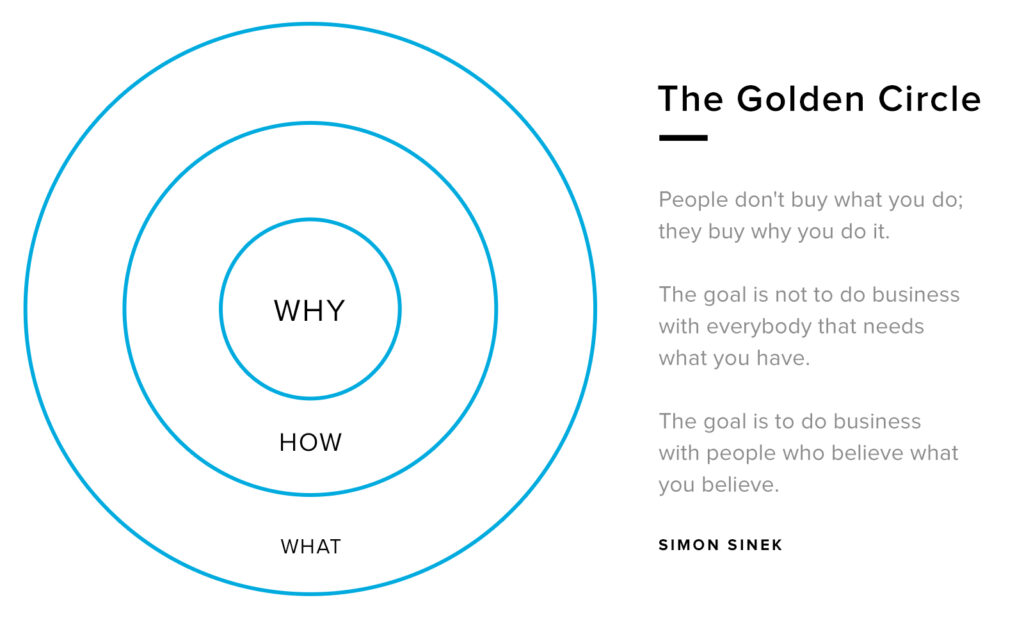
The 3 Parts to The Golden Circle:
- What – the products or services you offer to your customers
- How – the things that differentiate you from the competition
- Why – the reason you are passionate and why you exist
In fact, in the video you’ll see below, Sinek explains how to truly differentiate a brand when most of them fail.
I’ve probably watched this presentation over a hundred times, and still get chills when I do. It’s one that I send to all clients prior to our kick-off meeting for the brand discovery phase.
Some people in the marketing industry think this concept is overrated, but I disagree. It’s inspiring, certainly if you are new to branding a business or idea.
(And, there’s a reason why it’s one of the most popular TED talks of all time!)
Sit back and take a look:
“People don’t buy what you do; they buy why you do it.
The goal is not to do business with everybody that needs what you have.
The goal is to do business with people who believe what you believe.”
– Simon Sinek
You too can use The Golden Circle as a starting point to identify your unique brand purpose.
2. Research competitor brands in your industry.
You should never imitate exactly what the big brands are doing in your industry.
But, you should be aware of what they do well (or where they fail).
The goal is to differentiate from the competition. Convince a customer to purchase from you over them!
We’re always thinking about how to make a brand stand out from what’s out there already. Don’t skip this step in the brand building process.
Research your main competitors or benchmark brands. For instance, study how well they have gone about building a brand name.
For a brand name to be effective, it needs to be easy for consumers to recognize and remember.
Creating a brand competitor research spreadsheet
Competitor research is a key element of your own brand development. Start by creating a brand competitor spreadsheet for comparison. You can use Google Sheets, Excel, or even just a notebook.

Then, answer these fundamental questions.
- Is the competitor consistent with messaging and visual identity across channels?
- What is the quality of the competitor’s products or services?
- Does the competitor have customer reviews or social mentions you can read about them?
- In what ways does the competitor market their business, both online and offline?
Choose a few competitors, two to four (2-4) is a good number for your comparison chart. You might want to take a look at other local businesses, or even aim to benchmark against name brands.
Competitor research (or market research), is one of the key components in discovering and defining your brand positioning.
3. Determine your brand’s target audience.
The foundation for building your brand is to determine the target audience that you’ll be focusing on.
You can’t be everything to everyone, right?
Right.
When brand building, keep in mind who exactly you are trying to reach. You’ll tailor your mission and message to meet their exact needs.
The key is to get specific. Figure out detailed behaviors and lifestyle of your consumers.
I’ll explain with a few brief examples.
- Instead of “all Moms”, you could narrow down the niche to hone in on “single Moms who work full-time from home”.
- “Techy people” is too broad. But “tech-savvy early adopters who manage a large team” can narrow the focus in.
- If you are targeting “college kids”, there is definitely room to get more specific. An example could be: “college students studying abroad in Europe during the summer”.
- “Anyone who needs a job” is certainly not a niche target market. However, “retirees looking to return to the workforce in an executive position” can be!
As you can see, targeting a niche requires committing to something very focused to start.
You’ll come to realize that the competitive advantage when branding your business is to narrow your target audience focus.
This can help ensure that your brand message comes across crystal clear to the intended recipient.

Solidify a picture of your consumers, then learn how to create a brand identity that they can understand and relate to.
Your Brand Buyer Persona
Brand creation relies on truly understanding the buyer persona. Here are a few of the things to document when describing your ideal customer:
- Age
- Gender
- Location
- Income
- Education Level
To get even more definition for your brand’s buyer persona, dive into these details:
- Motivations
- Goals
- Pain points
- Fears
- Desires
- Influencers
- Brand affinities
⇨ Learn how to define the right target audience
Identifying the target audience for your services or products is an exercise that will affect and benefit all areas of your brand building process, particularly marketing efforts.
You want the ideal person consuming your content, clicking on your ads, subscribing to your email list, etc.
4. Establish a brand mission and vision.
Have you thought about your brand mission and brand vision? In essence, you’ll have to craft a clear expression of what your company is most passionate about.
This is your why; the reason you get up every day.
Before you can build a brand that your target audience trusts, you need to know what value your business provides.
Your brand vision is a future, someday, aspirational statement that your brand drives towards achieving.
Envision a projection of where your brand aspires to go, what it aspires to be, and what impact it will have on the environment you are in—think 10 years out.
READ MORE: Brand Vision: Stop Drifting and Start Driving Growth!
The mission statement is a now, everyday, statement of commitment that is a roadmap for accomplishing your vision. It will inform how you execute your brand building strategies.
Everything from your logo to your tagline, voice, message, and personality should reflect your mission and vision.
You can use the information gathered from The Golden Circle exercise (see Step 1) to create a clear and impactful brand vision and mission statements.
Brand Building Examples: Nike
We all know the Nike tagline: Just Do It. But do you know their mission statement?
Nike’s mission is: “To bring inspiration and innovation to every athlete in the world“.
You can see the Nike mission everywhere. They focus on all types of athletes using Nike products to be their best selves.
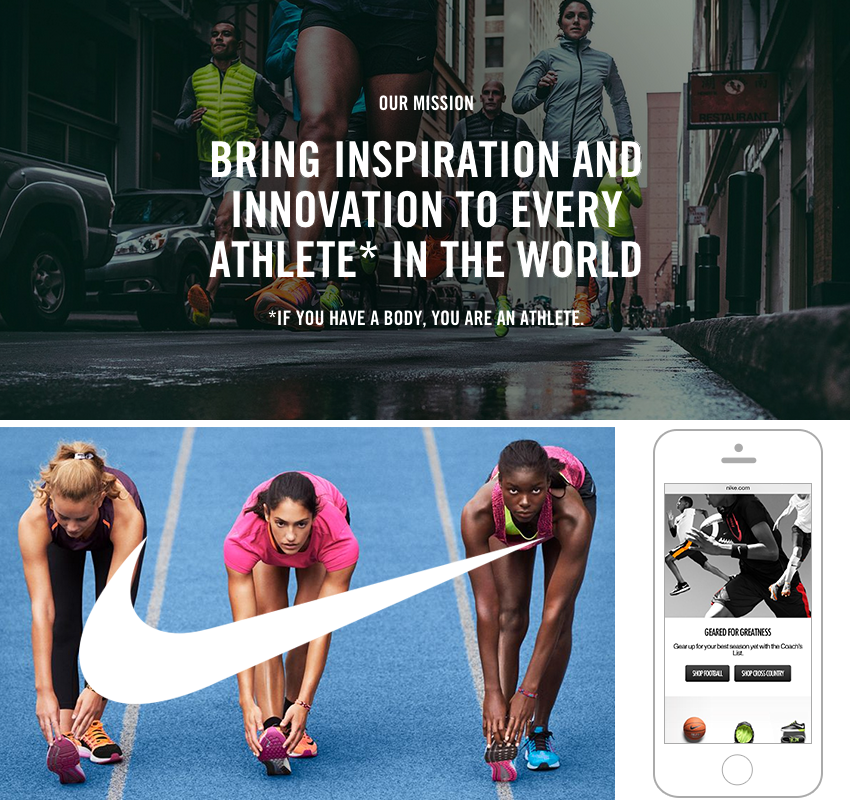
Nike goes even further with its brand mission, by adding a footnote to the statement: “If you have a body, you are an athlete“. Think about how wide their target audience becomes with a disclaimer like that!
The company has built up such a reputation and brand following, that it’s able to increase the target to accommodate every “body”.
When branding your business, start small and remember to focus on your target niche audience first.
With time, your brand loyalty may grow enough to expand your reach.
5. Outline the key qualities & benefits your brand offers.
There will always be brands with bigger budgets and more resources to command their industry.
Your products, services, and benefits belong solely to you.
Starting a brand that is memorable means you dig deep to figure out what you offer, and no one else is offering.
Focus on the qualities and benefits that make your company branding unique.
Assuming you know exactly who your target audience is (see Step 3), give them a reason to choose your brand over another.
It’s important to note that this is not just a laundry list of the features your product or services offer to the customer or client. Think about how you provide value that improves consumers’ lives (outcomes or results that are experienced).
Here are a few examples:
- More authentic and transparent customer service
- A better way to support productivity
- Reducing costs with a more affordable option
- Saving time on daily tasks
Brand Building Example: Apple
Apple is obviously not just another computer company. One of their key qualities is a clean design, and a key benefit is ease of use.
From unique packaging to their announcement events, Apple always reminds customers that its products can be used right out of the box.
Do you remember Apple’s slogan back in 1997-2002? It was “Think Different“. This notion continues to exist, today.
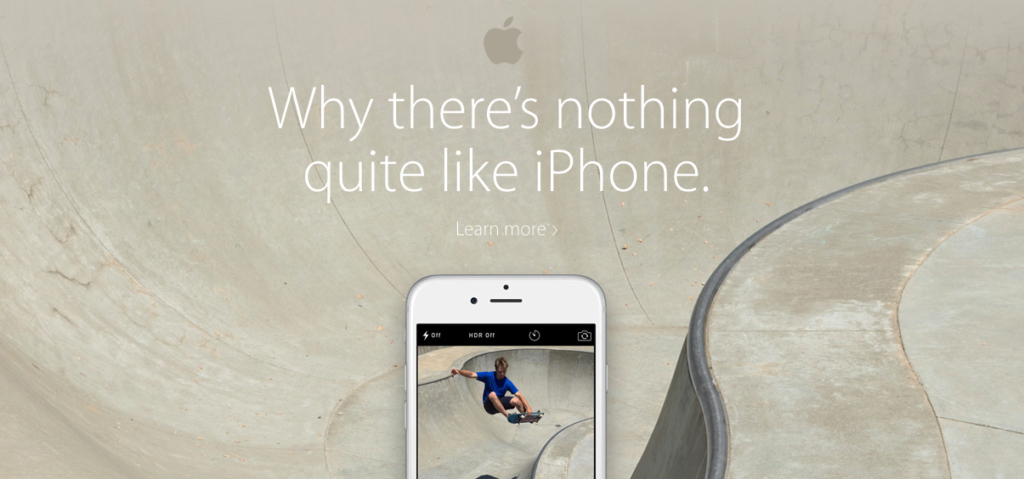
We’re almost halfway through the steps of the brand building process. If you’ve made it this far, give yourself a high five.
6. Form your unique brand voice.
Your voice is dependent on your company’s mission, audience, and industry.
It’s how you communicate with your customers, and how they respond to you.
A brand voice could be:
- Professional
- Friendly
- Service-oriented
- Authoritative
- Technical
- Promotional
- Conversational
- Informative
There are endless adjectives and possibilities that can build a brand voice behind your messaging.
Ultimately, you want to choose a brand voice that makes sense and resonates with your target customers. (Again, going back to Step 3!)
You’ll see that if you find and use the correct brand voice, you have the strongest chance of connecting with consumers.
This is particularly important when publishing blog articles or social media posts. Maintaining a consistent voice will help your brand image become recognized on multiple channels in the same way. A community of followers, readers or subscribers will come to expect a certain brand voice and brand personality when they consume your content (see the next step).
Brand Building Examples: Virgin America
Virgin America is known for its friendly and reliable customer service, and its voice constantly builds that brand.
On Twitter, notice their personable style—using location-based humor in this instance. They also reinforce the value that they bring to their customers—guaranteeing power outlets on every flight.
Fish sticks will fly at Pike Place before we ever offer a flight without power outlets. #FleetWide
— Virgin America (@VirginAmerica) August 4, 2015
7. Let your brand personality shine.
Customers aren’t looking for another cookie-cutter company that offers the same thing as everyone else.
They are looking for an experience tailored to their needs, backed by genuine personal interaction.

Wondering how to brand your business in a unique way? Make your personality stand out in every aspect of your brand building process.
Be consistent with this brand personality across all points of contact.
It can be as simple as:
- A conversational voice in communication (using “I”, and “you”)
- Sharing behind-the-scenes content
- Telling stories about real experiences
- Describing your products/services in a quirky manner
8. Build a brand story and messaging.
When building a brand, tell customers succinctly who you are.
Use the business voice you have chosen for your brand.
Your messaging should be intricately associated with your brand and conveyed consistently.
This part of the brand development process goes beyond your logo and tagline to define the key aspects of:
- Who you are
- What you offer
- Why people should care
A brand story is an opportunity to communicate on a human level, making a direct emotional connection with your consumers.
What this means, is that the language you use should be understood immediately while striking an emotional chord.
Make it simple and clear.
Most importantly: when creating a brand story, address not what your product can do…but why it is important to your customer.
Brand Building Example: TOMS Shoes
TOMS Shoes has built a huge social following and overwhelming positive brand perception.
They clearly define their message front and center on their website: “Improving lives. With every product you purchase, TOMS will help a person in need. One for One.“
This story is carried out through every touchpoint a consumer has with the brand.
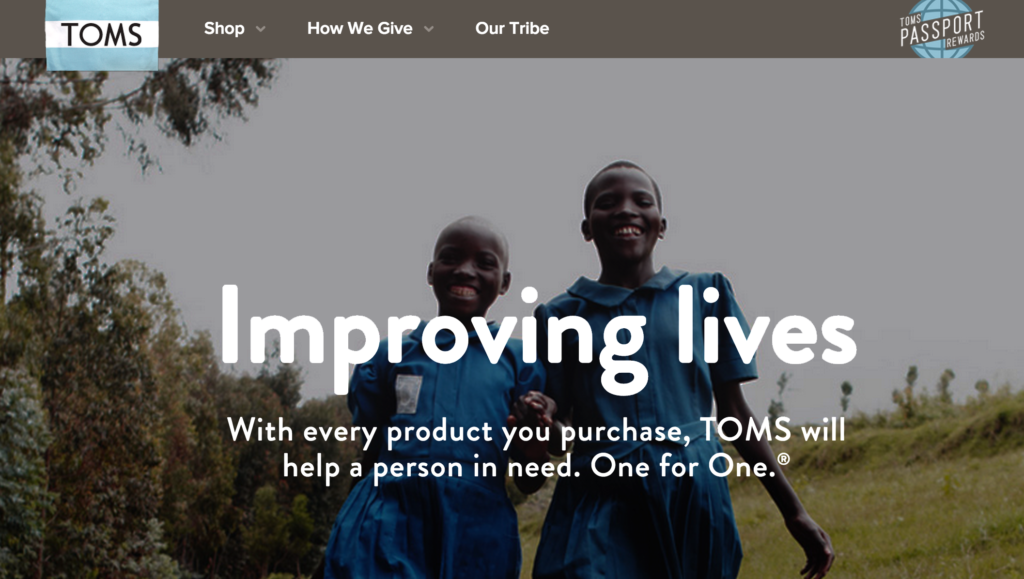
9. Create a brand logo & tagline.
When you think about how to build a brand, visuals probably come to mind first. We haven’t even talked about these until this deep into the brand building process!
This step may be the one where you need help with creative execution.
The most exciting (and arguably the most important piece) of the brand building process, is to create a brand logo and tagline for your company.
This logo will appear on everything that relates to your business. It will become your identity, calling card, and the visual recognition of your promise.
So be willing to invest the time and money by creating something exceptional to reinforce the visual identity for your business.
Need help branding your business? Hire a professional designer or branding agency with logo and identity design experience, to help make your brand stand out.
Their expertise will ensure that you get a unique and timeless mark for your business.
A designer can also develop brand guidelines, to ensure consistency for any future application of the logo and associated brand color palette or fonts.
A strong brand style guide will include the following things:
- Logo size and placement
- Color palette
- Typography and fonts
- Iconography
- Photography/image style
- Web elements
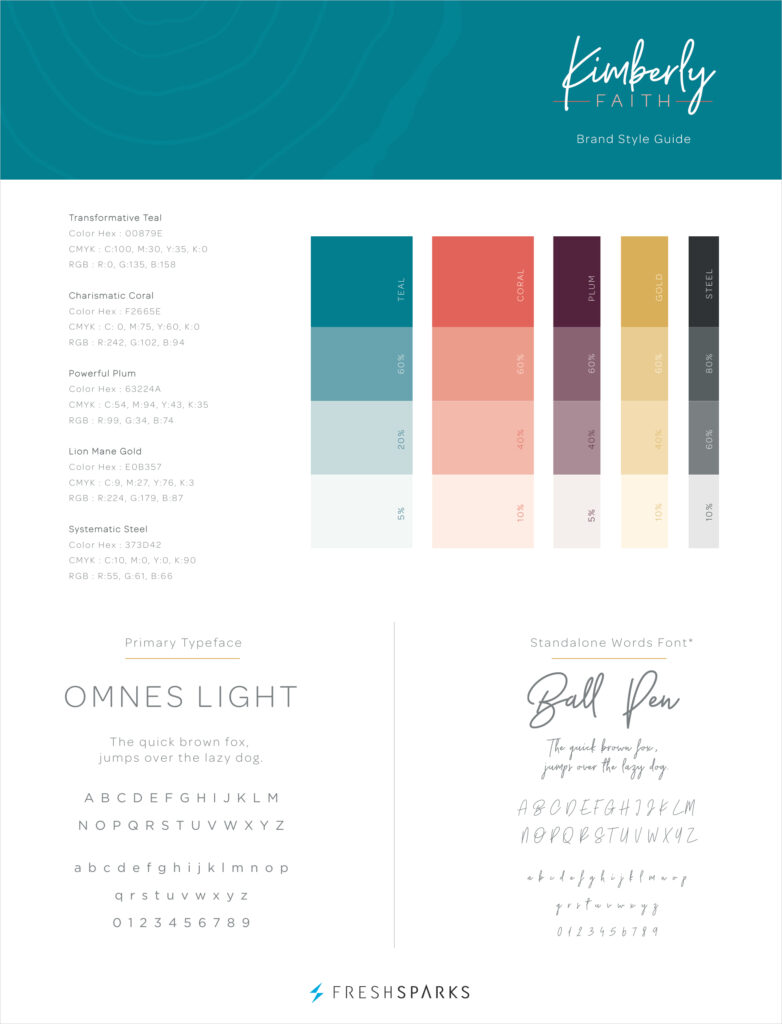
10. Integrate your brand into every aspect of your business.
The brand building process never stops.
Your brand should be visible and reflected in everything that your customer can see, read, and hear.
Let me explain.
If a client walks into your office, or a customer walks into your store—your brand image should be on display both in the environment and with personal interactions.
Anything tangible–from business cards to advertisements, to packaging and product–needs the stamp of your logo.
On any digital platform, ensure that your brand looks the same everywhere. Use your brand style guide to create consistency with visuals such as color and logo use, fonts, photography, etc.
Your website is the most important tool for marketing your brand. When you design your website: incorporate your voice, message, and personality into the content.
Profile pages for social media networks should be branded visually, and with your chosen voice for engagement.
And don’t forget about video! YouTube, Facebook Video and Facebook Live, Snapchat and Instagram Stories are all platforms that need to have content executed with your unique brand voice and personality.
For those venturing into podcast audio, adhere to a theme that supports your brand message, value, and voice.
Brand Building Examples: Warby Parker
Warby Parker has managed to quickly develop a brand that is unique and best in class. Their innovative product home try-on experience, retail environment, and digital content marketing efforts are perfectly tailored to the lifestyle of its target audience.
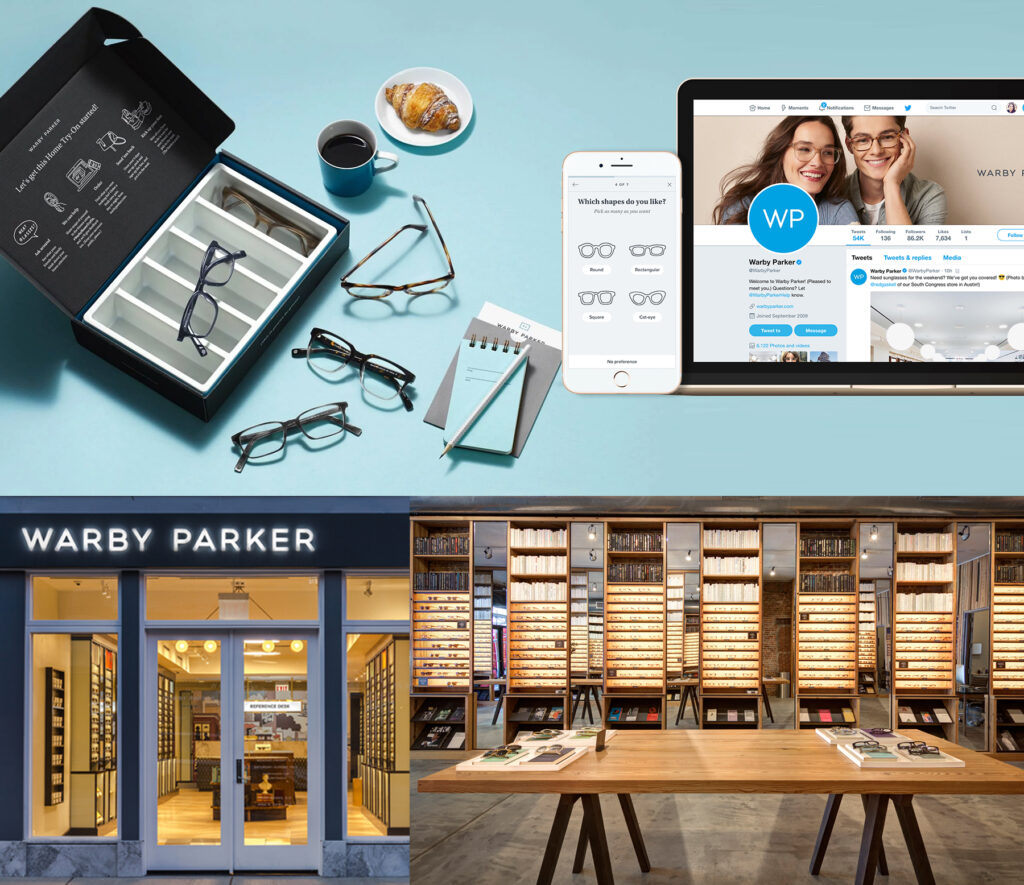
11. Stay true to your brand building.
Unless you decide to change your brand into something that is more effective based on measured consumer response, consistency is key.
Refer back to your Brand Strategy whenever you need to make a decision about identity or marketing.
Once you establish a brand voice, use it for every piece of content you create. (See above, Step 6 in the brand building process.)
Document all the brand guidelines you create and distribute internally for reference.
What is brand building worth, if it’s not consistent? Don’t constantly change your branding. The inconsistency will confuse your customers, and make long-term brand building more difficult.
Brand Building Example: Starbucks
Starbucks is the world’s leading specialty coffee retailer, and their brand has always promised to bring people together.
The Starbucks mission?
“To inspire and nurture the human spirit – one person, one cup and one neighborhood at a time.”
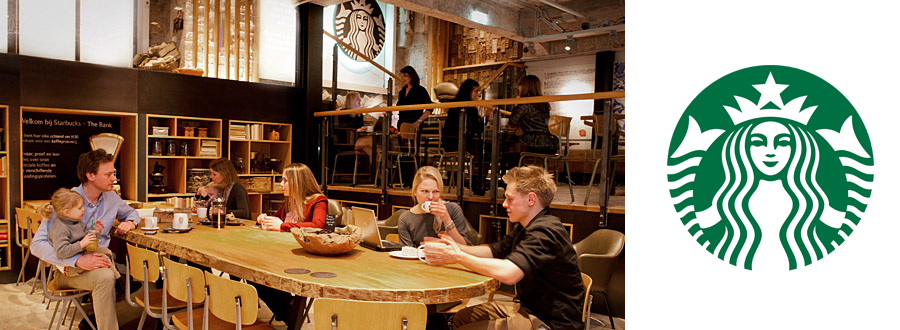
That’s why at every store you’ll find free Wi-Fi, large tables, and soothing music to make chatting with others easy. They always write your name on your coffee for an extra personal touch.
Even despite a logo change in 2011 (removing the company name!), the Starbucks brand perception remains strong. When you see that simplified green mermaid logo, what do you feel? I guarantee it’s something.
Bonus: Be your brand’s biggest advocate.
When you build a brand that works for your small business, you (and your employees) are the best advocates to market your brand.
No one knows your brand better than you, so it’s up to you to spread the word.
When hiring employees, ensure that they are a culture fit–aligning with the mission, vision, and values of your brand.
Encourage employees to establish a personal brand that aligns with your company brand building process, further strengthening reach.
Give your loyal customers a voice. Encourage them to post reviews, or share your content.
Building Brand Awareness in 2022
Now that you know the steps for creating a brand successfully, I want to quickly go over the components needed to really set up a good digital foundation to build upon.
These are the key areas my own brand agency executes on when we build brands for businesses just like yours. Let’s review the ways to build brand awareness through marketing, engagement and community building.
Website User Experience
Your website is the most important marketing tool you have for business growth and brand building.
This is the place that your consumers will visit to learn more about your business, and take action when they are ready. Not only does the user experience have to be exceptional in order to convert, but your messaging needs to tell your brand story.
Above all:
Your website has to load fast and be mobile-friendly (a responsive web design).
Credit: freshsparks.com

